-
Posts
4,737 -
Joined
-
Last visited
-
Days Won
119
Content Type
Profiles
Forums
Resource Library
Events
Gallery
Blogs
Store
Community Map
Posts posted by Mayner
-
-
Strong family connection to Broadstone and Liffey Junction and later explored the remains of the station in the early 80s. My maternal grandfather joined the Midland as an engine cleaner in 1900 married my Grandmother shortly after being appointed as driver in 1918 and raised a family in a railway house in Great Western Square. Although his railway career was cut short as a result of ill health and passed away years before I was borne, my Mother often talked about childhood memories of her father working on the railway at Broadstone and Liffey Junction.
The area around Broombridge would have been completely rural market gardens and cow lairage up to the 1940s with the development of the Cabra West on a Garden City model with Corporatuion housing and industrial units backing on to the railway.
-
 1
1
-
 1
1
-
-
Interesting to see how Irish voters would react to say the FF/FG coalition running in the next election on a platform in Income Tax cuts and road building financed by cutting 'wasteful' Government expenditure including axing the Dublin Airport Metro, and other public infrastructure projects and job cuts in all Government Departments.
This is basically what happened in New Zealand last year where a centre right coalition was elected which effectively reversed the majority of policies on a centre left government which was heavily committed to investment in public infrastructure primarily rail, road safety, electricity and water.
The coalition parties specifically identified the axing of an Auckland Light Rail project that would have linked the CBD with the Airport and local fuel taxes used to fund transport infrastructure. Cross-subsidising rail/public transport with taxes levied on motorists/road users was deemed unfair on principal.
"The sting in the tail" for the road user so to speak was a post election announcement that "congestion charges" (similar to London) would be introduced to 'manage-demand and Tolling (something of a taboo in New Zealand) would be considered for new roading projects.
Roading projects have the advantage over rail in using mainly local labour and material and keeping people at work in a recession, and can operate on a true user pays basis if tolls and duties are set at the correct level.
-
 2
2
-
-
At first sight the loco reminded me of a cross between the Triang 'Continental" 0-4-0 https://www.ebay.com/itm/375294131391?chn=ps&mkevt=1&mkcid=28 and Big Big Train 'Continental" 0-6-0 of the late 60s http://www.tri-ang.co.uk/2020/General 28/BBEngineA.jpg. Maybe Triang/Rovex idea of what a continental loco looked like.
Its not a bad freelance conversion combining Triang 0-6-0 chassis and parts from the "Continental" 0-4-0, the seller seems to have 'lost the plot" in listing the model as a County Donegal loco.
-
 1
1
-
-
On 25/3/2024 at 9:26 PM, Irishswissernie said:
There are a couple more of Loughrea from 14 March 1961.
The last one according to JG Dewing's title is a 'selfie' 29 May 1964 at Mount Pleasant on the ex GNRI Main Line. Weather seems to have been better and warmer then. He travelled throughout Ireland by Bike. Not much luggage on view and no Anorak but there must have been a jar of Brylcream in that saddlebag.!
Interesting 6w 1st 39m apparently kept as a spare on the former carriage shed siding to strengthen the branch train.
Quite a long mixed train with a passenger brake at the rear.
There is a 21st April 1955 HC Casserley photo of 656 with the branch train at Loughrea made up a single H Van, ex-GSW 6W Brake 3rd and a 'modern' Bredin Composite coach most likely 2115.
The Casserleys party chose to travel in the 6 wheeler despite exhortations from the guard "You'll be much more comfortable in the bogie, Sorr".
-
 3
3
-
-
1 hour ago, Irishswissernie said:
Its possible that a set of ex-MGWR 6w were in use as late as 1961.
According to Padraig O'Cuimin in Baronial Lines of the MGWR bogie coaches were introduced on the Loughrea Branch in the 1950s. A GSR built composite 2115 (Built 1935) ran with 91 an ex-GSWR 6w Brake 3rd No91.
"At other times a Midland set was used" 39m 6w lav 1st, 85m 6w second and 9m 6w BK 3rd rebuilt by the GSR without the birdcage look out. This looks like the set in the first proto.
O'Cuimin states that the final steam set was made up of 2111 a 1925 GSR Composite and 2932 one of the recently introduced 4w Luggage and Heating Vans.
The coach in the photo with 610 appears to be a 1920s GSR coach and likely to be 2111, the 6w Passenger Brake appears to be ex-GSWR with gas lighting possibly No 91 (the shape of the lamptops is a feature of gas light carriages).
The steam locos are both ex-MGWR L Class 0-6-0s or J19 rebuilt with superheated boilers, these engines originally ran with "Stirling" style tenders with springs hidden behind the framing, but apparently replaced with larger tenders, the first off a 2-4-0 or more modern (1890s) LM/J18 or a 2-4-0, 610 has a larger post 1900 tender possibly off a scrapped 4-4-0 or 0-6-0.
-
 5
5
-
 2
2
-
-
Speeder (Inspection Car) tours are a popular pastime in the USA. https://www.timesreporter.com/picture-gallery/news/2023/07/14/photos-speeder-railroad-inspection-cars-used-tours-age-steam-roundhouse/12255446002/
There were stories about farmers using gangers trollies (push along) "to bring in the hay" on the C&L, some 'young people" from Crooksling used a Dublin & Blessington gangers trolly to go to dances/parties at Brittas the 1920s, (the source who passed away long ago remembers there was a flat on one wheel giving a bumpy ride. Said it was an exciting ride down hill (in the days before teens had cars/motor bikes) but a pain pushing the trolly up the hill after a night out!
Some people considered using a preserved Wickham car for a 'run on the main-line" on a Christmas Day but thought better of it!
BNM used to carry out track inspections by scrambler motor bike, but locos (with a push button start no keys) used to be parked 'out on the bog" if you were in the mood for taking a spin.
-
 1
1
-
-
Been a problem for generations.
The line was closed between December 1956 and March 1960 because of serious flooding at Ballycar, services were restored on 10th March using 301 the last surviving GSWR 4-4-0.
The firebox was supposed to be high enough above the flood waters for 301 to get through although the diesels (locos and AEC railcars) could not
-
 3
3
-
 1
1
-
-
David put it succinctly 21mm gauge can be laid to OO/EM profile wheels and running clearances, but not really suitable for sharp/small radius curves (I use 2'6" as a minimum on plain track) and points need to be at least 3' radius.
Its important to understand that EM/OO fine wheels are to a finer/narrower profile to wheels fitted to RTR locos and stock and importantly that critical dimensions such as wheel Back to Back and Flangeway Clearance vary between EM and Double O Association Intermediate Track and Wheel Standards.
I use EM profile wheels set with a Back to Back of 19.3mm for the majority of my locos and stock with a Flangeway Clearance of 1mm while Brendan 8056 uses existing (NMRA) profile wheels with the B-B set at 19mm presumably with a wider flangeway clearance.
It was necessary for me to reduce the thickness of the bogie sideframes of a B141 re-gauged with the original Bachmann wheels as the wheels rubbed on the sideframes with the B-B set to 19.3mm. Clearance between wheels and side frames was not a problem on my B141s fitted with narrower EM profile wheels.
While diesels and stock are relatively simple to re-gauge, a 21mm gauge steam outline loco is basically a scratch or kit building exercise in sheet metal due to the very tight clearances between wheels, splashers, outside cylinders/valve gear on the full size locomotive.
I think Stephen or Fran from IRM/Accurascale pointed out that it was not practicable to produce an EM gauge variant of the Accurascale GWR Manor due problems achieving sufficient clearance given the characteristics of the material used, on of the reasons British OO exists.
-
 1
1
-
 2
2
-
-
The existing Parkside kit https://www.petersspares.com/p/parkside-models-pc65-br-12t-palvan-kit-oo-gauge is probably a better and cheaper option than the new Bachmann model for modelling the CIE Palvan.
Apart from the underframe the main visual difference between the CIE and BR vans was that the Irish Vans were fitted with sliding doors (2 types) and three different types of end stampings.
Some of the vans were fitted with corrugated ends similar to the standard BR Van, its possible to produce this type of van by doing a 'mix n match" between a Parkside Pallet and Ply sided van kits as outlined in James Hiltons recent article on Irish vans https://paxton-road.blogspot.com/2024/03/irish-vans.html
The underframes on the CIE Palvans were quite unlike the BR vans a combo of Bulleid Triangulated Underframe, axleguards with spring dampers like the BR Pallet Vans and 'either side" brake gear similar to that fitted to older style British built tank wagons a very strange combo.
The Bachmann/Parkside chassis are best described as near enough for the Irish pallet vans if you don,t look too closely.
-
 1
1
-
 1
1
-
 1
1
-
 1
1
-
-
9 hours ago, spudfan said:
Don't do Facebook, or social media. I have an e-mail and I go on line to talk about toy trains...
A lot of the crap on Facebook/social media is relayed by the older generation, have a relative in their 80s form the States that only posts Trump/Republican Party propaganda and conspiracy theory stuff, while our 14 year old simply chats with their friends and shares selfies and artworks on social media. Populist politicians tend to appeal to the age group or people that feel "that they have been left out" by main stream politics leading to Brixit in the UK and quite reactionary governments in this part of the World. This in turn leads to increasing discontent among an upcoming generation who feel that they have been let down by their parents and grandparents generations, interesting ties in the next 15-20 years!
We use facebook to chat between family in gthe States and New Zealand but ignore most of the postings.
-
 3
3
-
-
59 minutes ago, airfixfan said:
Fintown run by local community not by those interested in railways similar problem with the Foyle Valley Museum
Its possibly Fintown Railway staff are paid by Údarás na Gaeltachta under a social employment scheme but there may be no public funding available to actually maintain or operate the railway.
Several preservation schemes in the South were able to employ staff under a social employment scheme (work for the dole), with the preservation group responsible for paying for materials and consumables.
Shortage of workers or volunteers was not really a problem, but the lack of/inadequate funding for heavy maintenance/overhaul work
-
Looking back at my family history to the 1880s the two things that stand out is that each generation went through a phase of youthful rebellion, (made their own decisions sometimes in the face of opposition from those in authority (sometimes parents and religious) ) and each generation worked through life's up and downs to bring up the succeeding generation. One interesting pattern on both sides of our family is women from old Irish families marrying men of English and Scottish ancestry (widen the gene pool?), though I changed the trend and married a woman of Viking/Germanic ancestry who is equally strong minded.
As a kid I remember a priest working himself into a lather during a sermon the World was about to end. He could not tell the difference between the sexes with boys and girls wearing long hair and similar clothing.
Parental opposition to a cousin going-out with a girl they considered low class, the couple eloped and have stayed together for over 50 years and are now great grandparents, but are at heart still a 60s couple.
Another cousin considered a failure in a family of high achievers became a left wing political activist and surprised his surviving brother and sister with the turnout of political dignitaries (all sides of the political spectrum) at his funeral.
We cannot judge succeeding generations by our own standards or without looking in the mirror.
-
 3
3
-
 2
2
-
-
B141 conversions using original Bachmann wheels top photo, Ultrascale EM profile wheels lower photo.
It was necessary to thin down /reduce the thickness of the Bogie sideframes using the Bachmann wheels with the wheel Back to Back measurement set at 19.3mm based on EM running clearance, there is sufficient clearance and no need to reduce the thickness of the sideframe when using EM profile wheels available from Ultrascale or Gibson. Ultra scale supply 21mm gauge wheel sets to order in both P4 & EM profiles, better wheel than Gibson but longer lead time to delivery.
I used 26mm plain axles available from a local supplier for the Bachmann Conversion
Setting up Ultrascale wheelset with Bachmann axle brushes and gear, the top hat brushes between axle brush and wheel are basically spacing washers to minimise side play. The steel object is a Back to Back gauge bought from TMD the predecessor of Studio Scale Models ,many moons ago.
The Crude Hornby but it works old type Stanier bogie converted to 21mm gauge
Piece of .60 Thou plasticard used as replacement bolster. 2mm bore brass tube used to sleeve standard axles cut in half, wheels are PC Models a long discontinued brand bought at a clearance sale about 30 years ag.
Same principal but more sophisticated. MJT "Suspension Units" packed out to accept 21mm gauge wheel sets used under a Laminate coach assembled using a Worsley Works set of parts. Wheels appear to be Gibson EM profile wheels on locally sourced 28mm pin point axles.
Purpose design of 21 or 16.5mm gauge Studio Scale Models GSR Bredin Coach.
Dapol ESSO Tank wagon. Solebars packed out to accept 21mm wheelsets. Similar principal used to convert Parkside BR Van and Pallet Wagon to 21mm gauge Irish models
-
 2
2
-
 2
2
-
-
The question of re-gauging really depends on whether you prefer to spend your time model-making/modifying models or prefer to spend your time running ready to run models. A lot depends on the track and wheel standard adapted P4 will require replacement of existing wheels with P4 profile wheels and potentially greater care in baseboard construction and tracklaying than the coarser standards, EM profile wheels should be used if you adapt EM running clearances, existing NMRA RP25 profile wheels fitted to the majority of rtr models are suitable for use with OO (Double O Gauge Association) running clearances. https://doubleogauge.com/standards/
The original version of the MM 141/181 was easy enough to re-gauge to 21mm gauge by replacing the existing axles and re-using the existing gears and wheels if you adapt OO running clearances, or with some thinning down of the bogie sideframes if you retain the existing wheels and adapt EM running clearances
Hand laying track and points takes longer than using Peco but can result in a more realistic appearance both in terms of track gauge and overall appearance of the track.
The IRM Bogie wagons can be re-gauged by moving out the wheels on the axles, the IRM MK2 Bogie coaches are designed for the wider 21mm gauge, but the axles/wheel sets may require replacement. Earlier IRM and MM and Provincial Wagons stock require modification to the chassis/bogies to run on 21mm gauge.
I have worked in 21mm gauge for over 30 years, but haven't gotten round to building a layout as I get most of my enjoyment out of building locos, stock and buildings and haven't really had time to build a layout. Most of my locos and stock are CIE/GSR steam era were built from kits and modifying ready to run not really an option in the first place.
If you are seriously considering re-gauging the first step would be selecting a wheel/track standard which largely determine the level of care/precision required in baseboard building and tracklaying, but also determine the minimum radius of curve feasible the more accurate the wheel/track running standard the greater the minimum radius required, I have successfully used a minimum radius of 30" using EM wheel profile/running clearances, adapting Double O Association standards may allow a small minimum radius.
Another approach is to mount the layout at or close to eye level and use a finer track like Peco Code 75 or Bull Head both of which are closer to scale in appearance than the standard Peco Code 100 track, the eye level view point distracts the eye from the appearance of the narrower gauge. Possibly what I would do if I was starting out with a blank canvas in 2024.
-
 2
2
-
 1
1
-
 3
3
-
-
On 11/3/2024 at 1:21 AM, LNERW1 said:
The Sheehaun Railway Historical Society is delighted to announce the discovery of several colour photos, the only known to exist, of the pre-closure SLR. Below are the two clearest found.
Above is No. 3 shown at Sheehaun Quay.
This photo was not captioned, but appears to show Number 3, one of the imported German saloons, and Railbus 1.
The SRHS has also been notified of rumours of 8mm film of the SLR taken by Seán O’Sullivan, known to most enthusiasts of the SLR for taking the haunting photograph of No. 3 on the last train of the pre-closure SLR. No comment will yet be given on the credibility of the rumour.
LNERW1, SLHS Chairman
The LGB Tram and 4w coaches are good sturdy models capable of running forever and not unlike early Schull and Skibereen stock.
Deltang https://www.deltang.co.uk/ are a good UK source of battery radio control equipment. Unlike DCC large scale battery radio control the majority of suppliers are 'cottage industry" businesses some of whom use Deltang components, the RCS (Australian) radio control system on my garden railway is based on Deltang components. Traditionally people placed the battery in a coach or wagon behind the Tram or Stainz loco, though I used a custom made battery of AA NiMh cells to power my LGB DRGW 0-4-0 diesel loco.
-
51 minutes ago, Rob R said:
63/64" which is as near as makes no odds 25mm
S Scale.
A scale for all seasons

S Scale on 16.5mm track popular in New Zealand for modelling the 3'6" narrow gauge. scale also popular in the States for both standard and narrow gauge modelling,
https://www.brians-place.com/models/S-Scale/railwaymodels.html
Apart from being primarily a scratchbuilders scale S is a nice intermediate scale between OO and O. Easier to work in than OO/4mm as eyesight and manual dexterity deteriorates as we get older and takes up less space than a similar model/layout in O Scale.
-
 1
1
-
-
Came across the first 'work' mobile while working in construction about 40 years ago the owners of the company had 'car phones" powered by massive batteries in the boot. Two way radio was used for communication on larger sites, earth-moving and transport businesses. Everything was open channel with great banter between drivers, plant operators and the boss.
Without secure channels we overheard communication from a "Security" company that transported cash and valuables in the Watford area, being amateurs it took us some time to identify the company, who were very defensive about their security breach.
Was supplied with a work cell phone from the early 90s, had to account for private calls on a monthly basis, and realised that they were useful if the work car broke down in on private travel. In more recent years employers became less strict about private phone use and no longer required to account for calls.
Bought my first mobile a Samsung when I 'retired" about 5 years ago, but had to replace it with an iPhone to control a drone used in connection with a new business venture.
Managed to mislay my iPhone, bank cards and cash in a car park at a shopping centre a couple of weeks ago, didn't realise that it was gone for about an hour. Luckily a Courier driver spotted the phone and holder and handed it in at the shopping centre Information Desk a very lucky escape.
-
 3
3
-
-
A bit of background three train collision calls for Norfolk Southern CEO to be removed.
-
 1
1
-
-
49 minutes ago, Galteemore said:
The reference to the dance hall is a nice bit of colour and I can just see the evening workings from Drogheda… although of course Ireland’s premier and legendary ‘Ballroom of Romance’ was located on Ireland’s premier and legendary railway, within walking distance of Glenfarne station on the SLNC…..the movie it inspired in 1982 is still wonderful….
Pontoon Ballroom was the place to go in the West 'himself" cloven hoofs and all was a regular, but a reputation of always being a perfect gentleman towards the ladies. The local lads had no chance
-
 1
1
-
-
Something of a break through made time this week for some overdue maintenance on the garden railway and carry out some detailing on No 664
A section of track on the Garden Railway was damaged by a by a falling tree in a storm last year and locos continued to de-rail on this section of track despite attempted repairs. One of the rails on this section was buckled narrowing the gauge and needed replacement.
Left rail buckled, moulded rail fastening have failed combination of storm damage and plastic ties (sleepers) and fastening becoming brittle after 16 years exposure to the weather.
I replaced the section of track with the buckled rail with a spare section from the workshop though the ties/sleepers are not in great shape.
464 navigated the repaired section without de-railing so the railway should get through this years 'Fall Stock Rush"
I have bitten the bullet and ordered €300 worth of replacement tie strip to replace approx 60' of failed ties/sleepers on the main circuit, I replaced the ties on the remainder of the main line about 10 years ago, the new ties should be good for another 15-20 years similar to full size wooden sleepers.
The next big way and works job is to replace a series of fence posts (that have rotted) that support the trackbase on the High Line from the Workshop to the main circuit, like a full size railway there is no end to the maintenance and replacement work as components reach the end of their working life.

664 main sub assemblies. Loco was dismantled following trial fitting of gearbox and motor. I had just cut a slot out of the lower section of the boiler to allow the motor to fit. The loco is weighted with Woods Metal cast in the loco and tender body. The weight under the motor needs to be tidied up, Woods Metal appears to expand during casting.

Most of the detailing has been applied to the loco, although I need to fit front buffers, vac pipes and ejector pipework.
More substantial work is required on the tender chassis including fitting an NEM coupler pocket similar to that used on the 52 Class 4-4-0 sorting out locotender drawbar and power pick up wiring.
I will dismantle the loco into a set of sub assemblies and complete the mechanical assembly after I have completed painting (GSR Grey) and varnishing the model.

Although 657 (33 Arrow) and 664 (23 Sylph) were both re-built in the mid 1920s with superheated boiler and canopy cab 664 was rebuilt with a saturated boiler (original MGWR Type) in 1930 and went through two further boiler changes and an Inchacore 'style" cab before withdrawl in 1961.
-
 15
15
-
-
2 hours ago, jhb171achill said:
Sadly, I doubt it very much...... Which raises an issue; with Adelaide turned over to servicing 4k trams, where in the city COULD a goods terminal be built? Fortwilliam area?
These days freight terminals are usually set up in newly established industrial areas on the outskirts cities, close to major road/motorway junctions.
Locally the recently established Ruakura Inland Port set up as a joint venture between a Port Company and a property company has sidings set up to handle 40 wagon container trains. https://www.ruakura.co.nz/explore-the-superhub/ruakura-inland-port/
-
 1
1
-
-
42 minutes ago, Noel said:
Thanks. So a factory rust weathering effect.
Steelwork spray painted red-oxide to prevent rust, galvanised steel body left unpainted when when wagons overhauled for beet traffic mid-70s
Wagon dumped out of service at Liffey Junction 83-4 had been used as spoil wagons on the DART project for several years.
-
 2
2
-
 2
2
-
-
On 11/3/2024 at 4:36 AM, Ironroad said:
That's a little unfair. Accountants are not engineers and if involved in the costing process can only take the information provided to them by engineers at face value. Sometimes in the course of competitive tendering it is engineers on the sales side that take an overly optimistic view on quantities etc.
The situation described by John would indicate to me that, yes, as should be the case the accountants were raising the alarm when actual costs were exceeding the estimates. I've seen this happen. Hopefully there were no other issues and the contingency factor, (that should be a part of every building/engineering proposal) provided sufficient cover, albeit of poor consolation.
In commercial construction an Estimator or a Senior Quantity Surveyor will prepare costings (and appoint contractors) for a project in consultation with members of the senior management team who are usually of an Engineering or Construction Management background rather that working is separate silos.
Part of the problem may have been a reluctance by managers from an Engineering or Construction background to question the assumption of an Estimator or Quantity Surveyor (member of a separate professional body)
As a Site Manager or Foreman I only got involved after a successful bid, my role was identifying issues and risks at an early stage including questioning design, estimating and final assumptions. At organisational level there tended to be two responses either to work through the issues or pretend they did not exist. I tended to jump ship quickly with the latter kind of organisation, staying around was not worth the hassle.
-
 2
2
-
-
6 hours ago, Galteemore said:
Interesting - a professional model maker on the Big Island has discovered Irish railways. His output is top notch - will be interesting to follow: https://paxton-road.blogspot.com/2024/03/irish-vans.html?m=1
Interesting there is an old saying that there is nothing new in the World, James Hilton's blog is largely a repeat of work published in UK magazines during the 80s and 90s by David Malone a UK based Irish P4 modeller who used the Parkside BR Van as a basis for the CIE H Van and GNR Bagged Cement Wagon. David's wagons were assembled to P4 standards which involved significant modifications to chassis and running gear.
David mixed & matched the Parkside BR van body with a Ratio GWR underframe to model the distinctive GNR 16T Bagged Cement Van
The H Van (early versions) used Parkside sides and roof with scratchbuilt ends and Irish single lever brake gear.
His ModelRail Digest article on Irish Goods Wagons included examples of scratchbuilt wagons including a Bulleid Open and a 20T Brake
-
 8
8
-
 1
1
-
 1
1
-
.png.c363cdf5c3fb7955cd92a55eb6dbbae0.png)





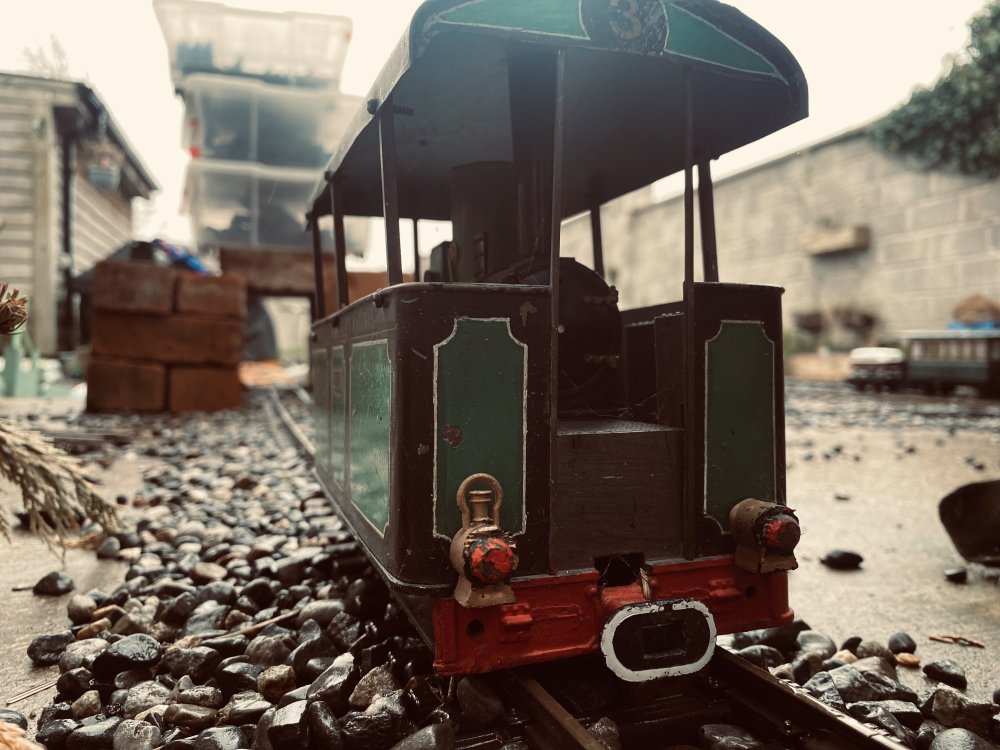
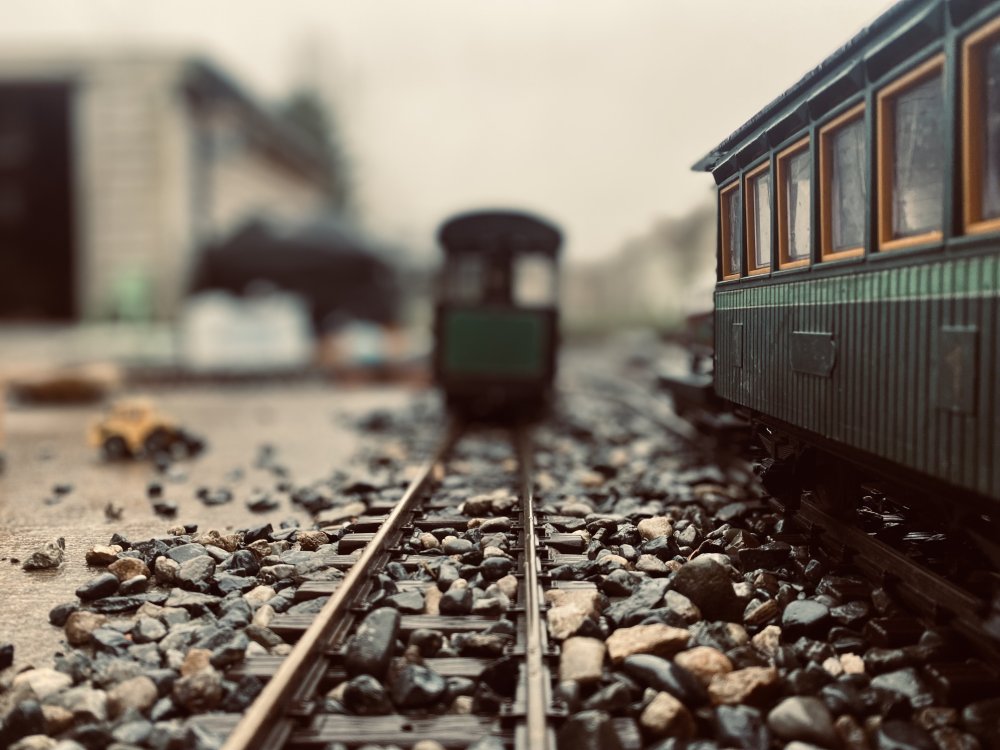
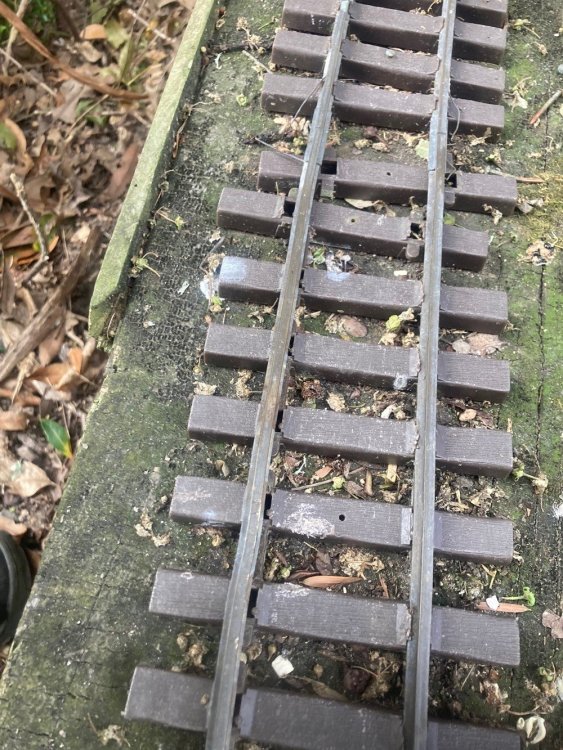
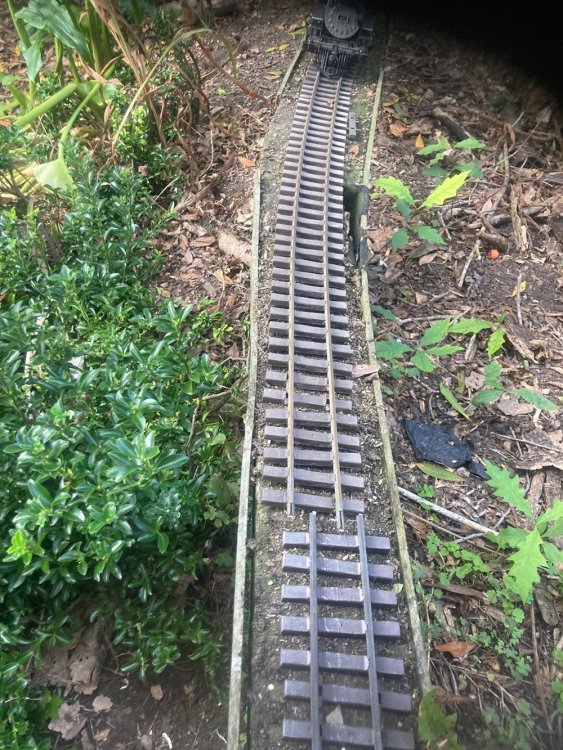
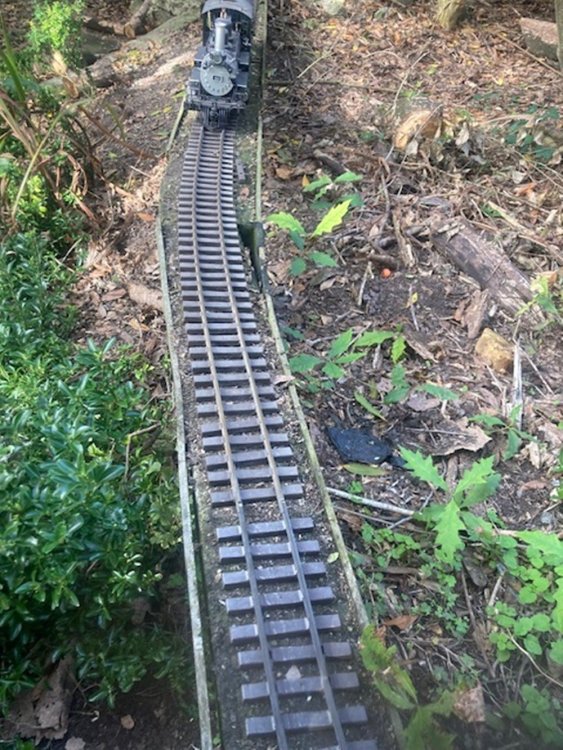
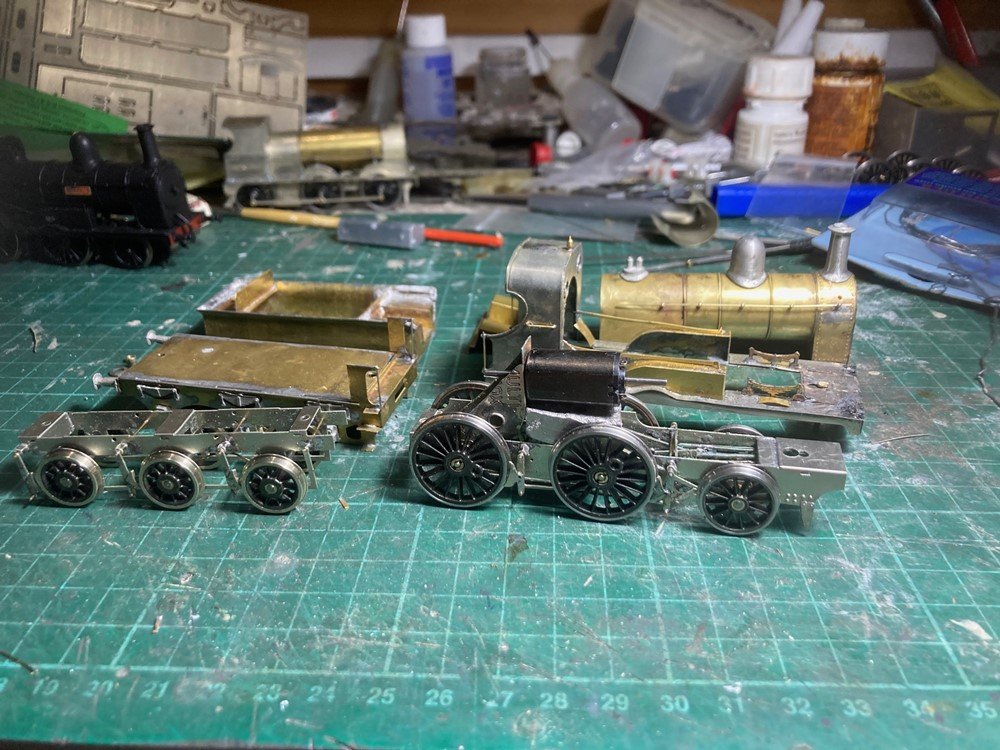
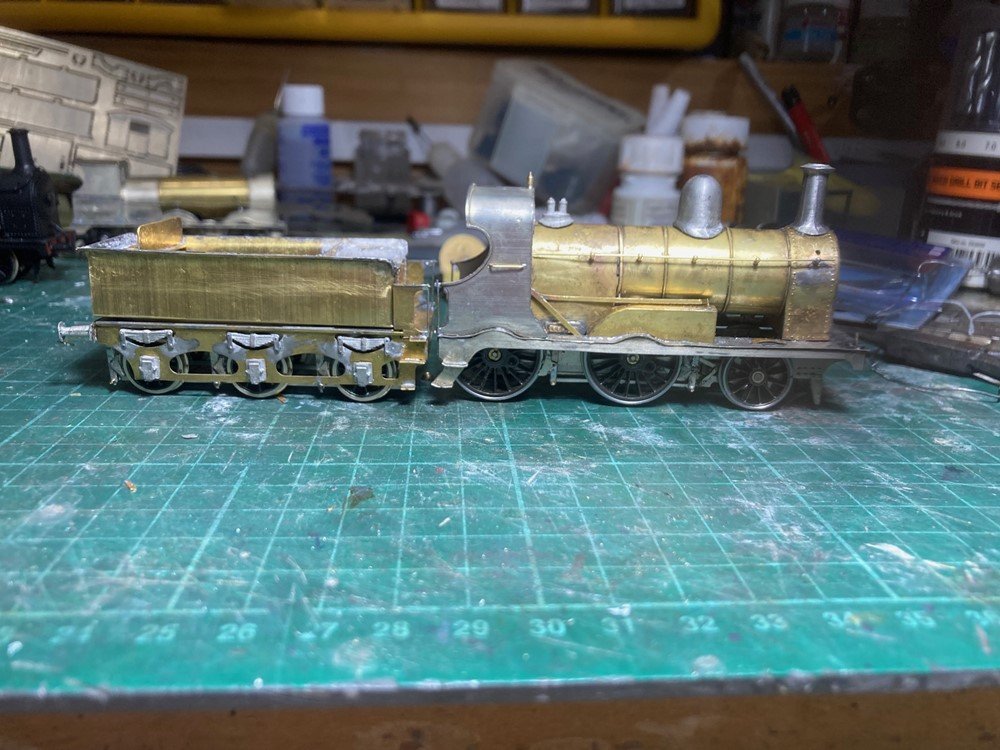
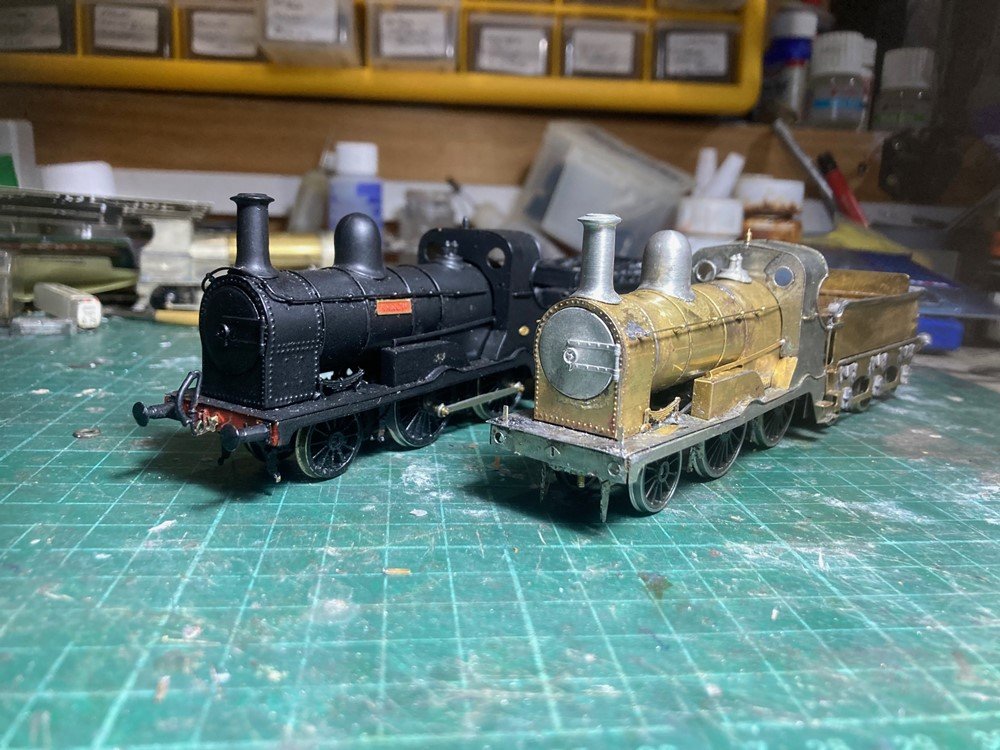
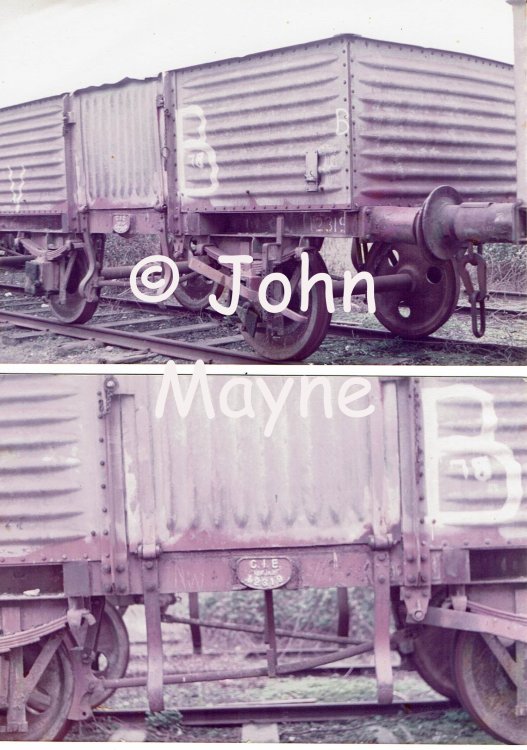
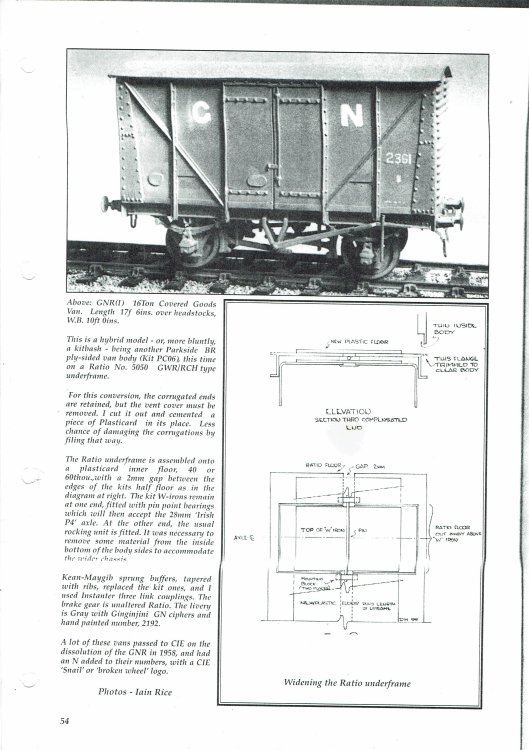
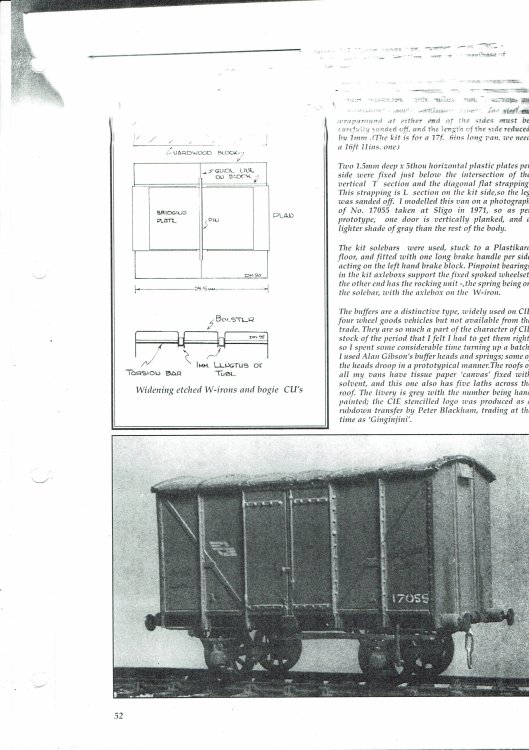

Hydraulic buffer stops
in General Chat
Posted
There was a hydraulic buffer stop at the end of the arrival road at Sligo Station up to the mid 70s. The hydraulic buffer stop had been replaced by a set of friction buffers when I 1st visited the station in 77-78 and the hydraulic buffer stop partially dismantled with the buffers and hydraulic removed.